The AET Index is a quantifiable look at the each ACC team in 5 different categories:
- Class Size (Percentage of team that are Jr/Sr)
- Returning Starters (Percentage of starters that are returning from previous year(s))
- Returning Lettermen (Percentage of players who have received a Letter)
- Depth Chart (Percent of 2-deep players who are Jr/Sr)
- Talent Points (Summation of Star points of the Depth Chart)
Background:
I started the AET Index started by simply looking comparing the class sizes of NC State and UNC-CH. When the UNC Spin Machine came out year after year promoting the “youth” of the Tarheels, I decided to quantify just how young these infants really were. The spin was so bad that I started noticing commentators and analysts during games – any games – saying that “So and So team is EXTREMELY young this yearâ€. Shortly after I completed my exercise, SFN did a piece on the very same subject (great article btw). I therefore decided to expand my work and look at the entire ACC.Â
I again expanded it to include Returning Starters, Returning Lettermen, and Depth Chart. I published my results for the years of 2006-2009 to point out the shear stupidity of the media and the UNC Spin Machine. One commenter then chimed in that even though Miami (2009) was one of the older, most experienced teams in the ACC that year, their “Talent†was all young. So I decided to expand one more time to include “Talentâ€. Now we all know that recruiting rankings are anything but an exact science but I figured the rest of this exercise isn’t 100% accurate so why not include “Talentâ€.Â
Check out the AET Index (2006-2009) for a historical look at the Index and how each coach is doing relative to the Index.
NOTE: I’ll adjust it on a weekly basis and post it before each week’s games on the message boards. Tracking down which freshmen didn’t make it to campus, which players transfer, and updated depth charts, will affect the index. The biggest announcement that could affect this year’s Index is obviously the results from UNX’s NCAA “Reviewâ€.
So, even though the Index is still in a slight state of flux he is what the ACC’s 2010 AET Index looks like:
NC State ended up better than I thought we would. What’s shocking to me is the percent of upperclassmen on the team/depth chart and probably more so the “talent†on the depth chart. (In review, recent tansfers and inflows of talent like David Akinniyi, Mikel Overgaard, Nathan Mageo and Michael Lemon) This is why I look at data because in my mind I was thinking we were a young team but we aren’t.
Let’s look at State since 2006:
Obviously having a smaller Index doesn’t equate to more wins at NC State. What it does show is Amato underachieved in 2006 (duh!!), TOB flopped in 2009 (another duh), and just how much we over achieved in 2008 with Wilson and Irving in their first seasons. In theory what you should be seeing is an inverse relationship, when your Index goes up your wins go down, also if your Index goes down your wins go up. So if your wins are low when your Index is low you’re underachieving; if your wins are high when your Index is high then you’re overachieving.
 Looking at who we play this year…
- Â @GT (6.2)
- VT (9.0)
- BC (7.0)
- FSU (6.0)
- @Clemson (4.8)
- Wake (8.6)
- @UNC (1.6)
- @Maryland (8.2)
 …It looks like if TOB wins the games he should then at the minimum then we’ll end up with 5 wins (remember the Home Field Advantage factor of 1.5). Our problem is TOB is 3-3 at home as the favorite and 0-2 on the road as the favorite, not a good percentage.
Obviously the thing that jumps out to me is how loaded UNX is. We all know by now that they are returning a ton of starters but look at how much they are separated between them and the rest of the conference. Now this is obviously fluid with the unknown of who will be counted as a member of this year’s team and who survives the purge yet misses X amount of games. This will be reflected in the weekly adjustments when the conference games begin and I’ll be posting it on the boards as the season progresses.Â
Now look at them since 2006:
One thing you can’t say is that they are a young team. In fact you haven’t been able to say since really 2007. What it does show is how much Davis is underachieving with what he has. This was truly supposed to be his year because the talent level on defense drops drastically after this year and then he loses the seniority on the team as well.
Let’s look at some other schools/coaches:
Beamer is the best because he wins when he’s supposed to and most of the time when he’s not. Wake’s numbers show me that while Grobe isn’t a bad coach, he’s not as great as everyone made him out to be. Yes, he consistently has the least amount of “talent” in the ACC but as the greatest QB Wake has had got older, Wake won less.  Miami, well at first I thought Shannon was in over his head and quite frankly maybe he was. What I’m interested in seeing is how Miami fares this year. If they get 6 or more wins then I’d have to say Shannon is definitely learning as a HC.  As he continues to bring in “talent” year after year then he just might be the guy to return them to the national title talk…but let’s see how he does this year before crowning him.


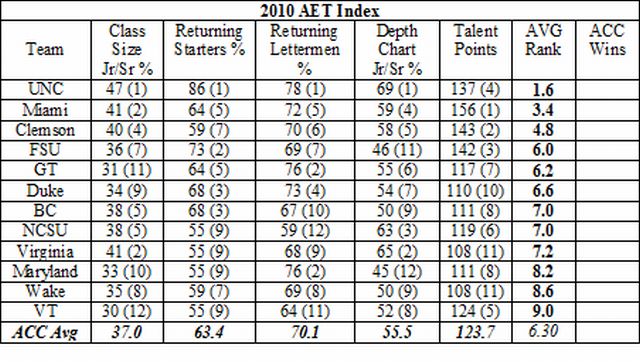

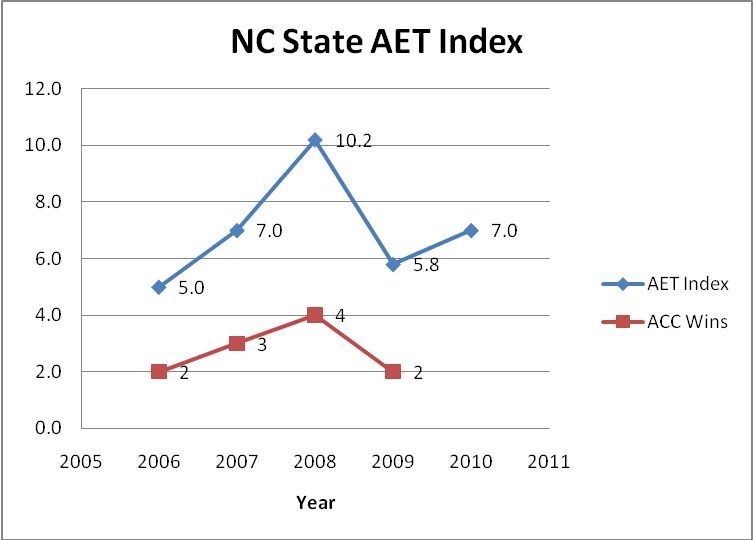

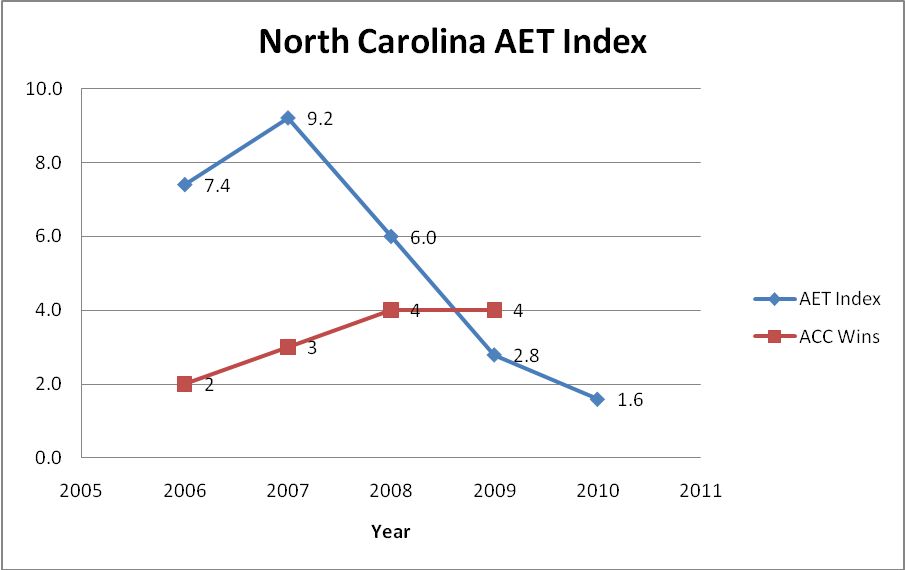



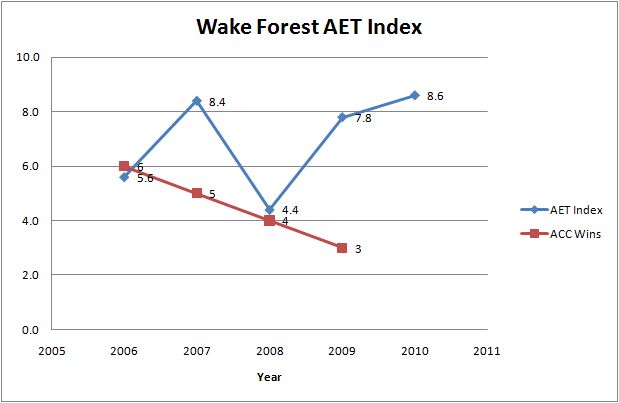

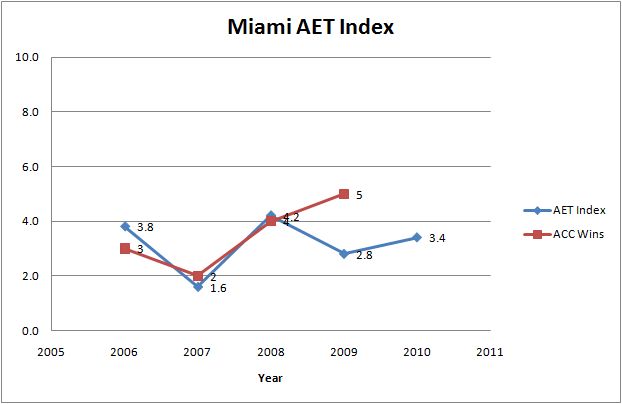

You must be logged in to post a comment.